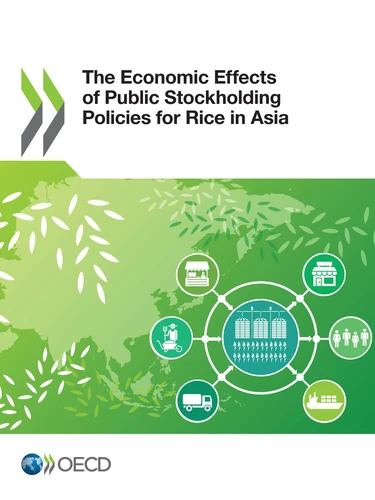The Economic Effects of Public Stockholding Policies for Rice in Asia
Par :Formats :
Disponible dans votre compte client Decitre ou Furet du Nord dès validation de votre commande. Le format Multi-format est :
- Pour les liseuses autres que Vivlio, vous devez utiliser le logiciel Adobe Digital Edition. Non compatible avec la lecture sur les liseuses Kindle, Remarkable et Sony
 , qui est-ce ?
, qui est-ce ?Notre partenaire de plateforme de lecture numérique où vous retrouverez l'ensemble de vos ebooks gratuitement
Pour en savoir plus sur nos ebooks, consultez notre aide en ligne ici
- FormatMulti-format
- ISBN978-92-64-30774-2
- EAN9789264307742
- Date de parution18/10/2018
- Protection num.NC
- Infos supplémentairesMulti-format incluant ePub avec ...
- ÉditeurOECD
Résumé
This report examines how public stockholding policies related to rice in Asia can influence domestic and international markets. Following a review of the working of rice public stockholding programmes in eight Asian countries (Bangladesh, China, India, Indonesia, Japan, Korea, the Philippines and Thailand), the report examines the impacts of these programmes over the medium term (2018-2030) and analyses how these impacts would change should the selected countries collectively set their public stocks to either a low or high level.
Results show that the strongest impacts would occur during the three-year transition period when countries adjust their public stocks to the new levels, but that there would also be structural impacts over the medium term, although at a lower intensity, on procurement, domestic and international prices, availability, private stock levels, and public expenditure. In the event of a global production shock, the model projects that the immediate impact on prices and availability would be less severe under the high public stock scenario, but that recovery would be faster and public expenditure lower when countries hold smaller public stocks.
Results show that the strongest impacts would occur during the three-year transition period when countries adjust their public stocks to the new levels, but that there would also be structural impacts over the medium term, although at a lower intensity, on procurement, domestic and international prices, availability, private stock levels, and public expenditure. In the event of a global production shock, the model projects that the immediate impact on prices and availability would be less severe under the high public stock scenario, but that recovery would be faster and public expenditure lower when countries hold smaller public stocks.
This report examines how public stockholding policies related to rice in Asia can influence domestic and international markets. Following a review of the working of rice public stockholding programmes in eight Asian countries (Bangladesh, China, India, Indonesia, Japan, Korea, the Philippines and Thailand), the report examines the impacts of these programmes over the medium term (2018-2030) and analyses how these impacts would change should the selected countries collectively set their public stocks to either a low or high level.
Results show that the strongest impacts would occur during the three-year transition period when countries adjust their public stocks to the new levels, but that there would also be structural impacts over the medium term, although at a lower intensity, on procurement, domestic and international prices, availability, private stock levels, and public expenditure. In the event of a global production shock, the model projects that the immediate impact on prices and availability would be less severe under the high public stock scenario, but that recovery would be faster and public expenditure lower when countries hold smaller public stocks.
Results show that the strongest impacts would occur during the three-year transition period when countries adjust their public stocks to the new levels, but that there would also be structural impacts over the medium term, although at a lower intensity, on procurement, domestic and international prices, availability, private stock levels, and public expenditure. In the event of a global production shock, the model projects that the immediate impact on prices and availability would be less severe under the high public stock scenario, but that recovery would be faster and public expenditure lower when countries hold smaller public stocks.



